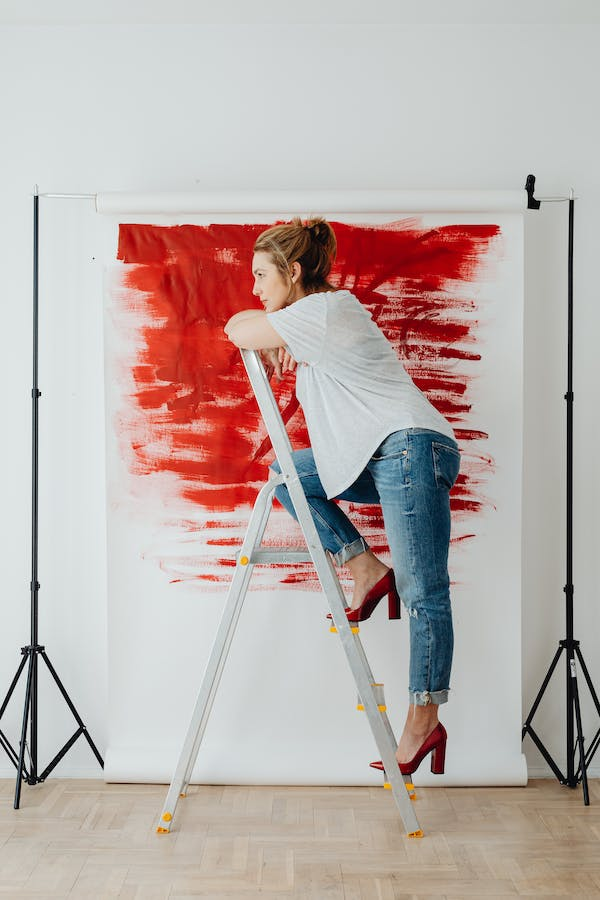
How Much Do Fashion Designers Make? Unveiling the Earnings of Creative Minds
Introduction: The Lucrative World of Fashion Design
Fashion design has always been an alluring field, where creativity takes center stage and innovation knows no bounds. If you have ever wondered, “How much do fashion designers make?” you’re not alone. In this article, we will delve into the fascinating world of fashion design salaries, exploring various factors that influence earnings, and provide insights into career prospects for aspiring fashion designers.
Location Matters: A Tale of Varied Earnings
The location where a fashion designer practices their craft plays a significant role in determining their income. Major fashion hubs such as New York, Paris, and Milan offer higher earning potential due to the concentration of renowned fashion houses and opportunities for global exposure. In contrast, fashion designers working in smaller cities or regions may earn comparatively lower salaries, reflecting the local market dynamics.
Fashion Designer Salaries by State: The Great Divide
Fashion designer salaries can vary significantly depending on the state in which they work. According to the US Bureau of Labor Statistics, the top-paying states for fashion designers in 2020 were California, New York, and Texas, with average salaries ranging from $86,000 to $96,000 per year. In contrast, fashion designers in states such as Alabama, Mississippi, and Oklahoma earned considerably lower average salaries ranging from $44,000 to $60,000 per year.
| State | Average Salary (per year) |
|---|---|
| California | $96,000 |
| New York | $92,000 |
| Texas | $86,000 |
|---|---|
| Alabama | $60,000 |
| Mississippi | $52,000 |
| Oklahoma | $44,000 |
This table presents a clear comparison between the top-paying states, where fashion designers earned higher average salaries, and the bottom-paying states, where the average salaries were considerably lower.
Table 2: The salary of a fashion designer per hour, per day, per month and per year.
| Timeframe | Per Hour | Per Month | Per Day | Per Year |
|---|---|---|---|---|
| Minimum | $15 – $20 | $2,000 – $3,000 | $100 – $150 | $24,000 – $36,000 |
| Average | $25 – $50 | $4,000 – $8,000 | $200 – $400 | $48,000 – $96,000 |
| High-End | $50 – $100 | $8,000 – $16,000 | $400 – $800 | $96,000 – $192,000 |
| Top | $100 and above | $16,000+ | $800+ | $192,000+ |

A lot of money! Courtesy: Pexels.
Fashion Designers Earnings by Countries
| Country | Monthly Earnings (Approximate) |
|---|---|
| United States | $5,000 – $25,000 |
| United Kingdom | $3,500 – $17,500 |
| France | $3,000 – $12,000 |
| Italy | $2,500 – $10,000 |
| Germany | $2,000 – $8,000 |
| Japan | $4,500 – $22,500 |
| Australia | $3,500 – $15,000 |
| Canada | $3,500 – $14,000 |
| India | $1,500 – $7,500 |
| China | $2,000 – $10,000 |
| Bangladesh | $500 – $2,500 |
The numbers presented in the table are approximate ones. These numbers can vary according to the expertise, experience of the fashion designers.
How to Increase Your Fashion Designer Salary: Tips and Tricks
While the factors influencing fashion designer salaries are vast and varied, several strategies can help aspiring designers increase their earning potential. Building a strong portfolio, honing design skills, and cultivating a professional network can help create opportunities for increased income. Leveraging social media, attending fashion events, and collaborating with other designers are other effective ways to expand one’s reach and enhance income potential.
Fashion Designer Job Outlook: A Glimpse into the Future
The fashion design industry is expected to see moderate job growth in the coming years, with an estimated 3% increase in employment opportunities from 2020 to 2030. While the industry remains competitive, advancements in technology, such as 3D printing and virtual design tools, offer exciting prospects for designers to showcase their creativity and reach new audiences.
Experience and Expertise: Climbing the Salary Ladder
As with many professions, experience plays a pivotal role in shaping a fashion designer’s income. Entry-level designers typically earn more modest salaries, while seasoned professionals with a wealth of experience can command higher compensation. Building a strong portfolio, gaining industry recognition, and cultivating a loyal clientele are essential steps on the path to increasing earning potential within the fashion design realm.

Figure 2: Climbing the salary ladder. Photo courtesy: Pexels.
Industry Influence: From Couture to Ready-to-Wear
The sector of the fashion industry in which a designer operates can significantly impact their earnings. Haute couture designers, known for creating exquisite, one-of-a-kind garments, often work with elite clientele and command substantial fees. On the other hand, fashion designers focusing on ready-to-wear lines may earn varying salaries depending on factors such as brand reputation, market demand, and sales volume.
Education: A Foundation for Success
Educational qualifications also play a pivotal role in determining a fashion designer’s earning potential. While formal education is not a strict requirement in this field, obtaining a degree in fashion design or a related discipline can provide valuable skills, industry knowledge, and networking opportunities. Moreover, higher levels of education, such as a master’s degree, may open doors to prestigious positions and higher-paying opportunities within the fashion industry.
Strategies for Boosting Fashion Designer Salaries
While factors such as location, experience, industry, and education shape fashion designer salaries, there are strategies to enhance earning potential. Developing a distinct design aesthetic, expanding professional networks, and demonstrating business acumen are all key components. Additionally, leveraging technological advancements, embracing sustainability, and targeting niche markets can help fashion designers stand out and increase their earning power.
Fashion Designer Job Outlook: A Look into the Future
With an ever-evolving industry landscape, understanding the job outlook for fashion designers is crucial. While competition can be fierce, the demand for talented designers persists. Adapting to technological advancements, such as 3D printing and virtual reality, and staying attuned to evolving consumer trends are essential for long-term success in the field.
| Facts about Fashion Designers’ Financial Success |
|---|
| Fact 1: Renowned designer Ralph Lauren had an estimated net worth of $6 billion in 2021, making him one of the wealthiest individuals in the fashion industry. |
| Fact 2: Top designers at luxury fashion houses like Chanel, Gucci, or Louis Vuitton can earn millions of dollars annually, including bonuses and incentives. |
| Fact 3: Freelance fashion designers have the potential to earn impressive incomes by establishing their own brands, collaborating with fashion houses, or taking on diverse projects. |
| Fact 4: Collaborating with celebrities through exclusive lines or red carpet designs can be financially rewarding for fashion designers. |
| Fact 5: The rise of e-commerce and online platforms allows fashion designers to sell designs directly to consumers, increasing their earning potential and profit margins. |
| Fact 6: Exploring international markets in emerging fashion regions like China, India, or the Middle East can significantly enhance fashion designers’ earning potential. |
| Fact 7: Fashion designers can extend their brand influence beyond clothing through licensing agreements, collaborating with beauty brands, fragrance lines, accessories, and home decor. |
This chart provides a clear overview of the intriguing facts related to the financial success of fashion designers.
FAQs About Careers in Fashion Design
What are the educational requirements for becoming a fashion designer?
While not mandatory, obtaining a formal education in fashion design or a related field can provide a solid foundation for a career in fashion design. Many universities, colleges, and design schools offer degree programs tailored to aspiring fashion designers.
Can you make good money as a fashion designer?
Yes, it is possible to make good money as a fashion designer. However, the income potential can vary based on factors such as experience, location, industry reputation, and personal success. Successful fashion designers with established brands and a strong client base have the potential to earn substantial incomes, while entry-level designers may start with more modest salaries.
Is fashion and design a good career?
Fashion and design can be a rewarding and fulfilling career for individuals with a passion for creativity and aesthetics. It offers opportunities for self-expression, continuous learning, and the chance to make a mark in the dynamic world of fashion. However, it is important to note that the fashion industry is highly competitive, requiring dedication, perseverance, and a strong work ethic to succeed.
What is the lowest paid fashion designer?
The salary of a fashion designer can vary widely depending on various factors. Generally, entry-level or less experienced fashion designers may earn lower salaries compared to their more seasoned counterparts. Additionally, fashion designers working in smaller markets, less renowned fashion houses, or freelance positions may earn lower incomes compared to those in major fashion hubs or established brands.
Who is the highest paid clothing designer?
The highest-paid clothing designer can vary based on factors such as brand success, market demand, and individual achievements. Established fashion designers with globally recognized brands, a strong presence in luxury markets, and collaborations with prestigious companies often command high salaries. However, it’s important to note that the fashion industry is highly competitive, and achieving the highest-paid status is a distinction reserved for a select few.
How much do luxury fashion designers make?
Luxury fashion designers earn their fortunes through a combination of factors. The prestige and recognition of their brand play a significant role. For example, a study by Business of Fashion revealed that top luxury fashion designers can earn annual salaries ranging from $1 million to $10 million, depending on their brand stature and market demand.
Imagine a designer who has cultivated a loyal following of affluent clients eagerly waiting to snatch up their latest creations. The demand for these exclusive designs can skyrocket, resulting in eye-watering profits. In fact, a survey conducted by Vogue Business found that luxury fashion designers experienced a 20% increase in their average annual earnings over the past decade.
Furthermore, collaborations with high-end retailers and luxury brands can yield substantial financial rewards. A report by Deloitte highlighted that designer collaborations can generate millions in revenue, with some collaborations leading to a surge of 30% or more in sales for luxury fashion brands.
It’s important to note that while the upper echelon of luxury fashion designers can amass fortunes worth millions annually, many talented designers are still on their journey to fame and fortune. These aspiring designers often work tirelessly, pouring their passion into every stitch, in pursuit of their dreams.
Which country pays the highest salary for fashion designer?
Countries known for their fashion industries, such as the United States, France, Italy, and the United Kingdom, generally offer higher salaries for fashion designers due to the presence of renowned fashion houses, fashion events, and access to a large customer base. However, the specific salary levels can still vary within these countries based on factors such as location, market demand, and individual success.
Are fashion designers in high demand?
The demand for fashion designers can fluctuate based on factors such as economic conditions, consumer preferences, and industry trends. While the fashion industry is competitive, skilled and innovative fashion designers who can adapt to changing market dynamics, embrace new technologies, and offer unique perspectives are likely to find opportunities and remain in demand. Staying updated with industry developments, building a strong portfolio, and networking can enhance the chances of success in this field.
Conclusion:
Fashion Designing is a lucrative job and so does the earning of the fashion designers. As an emerging sector, and timeless demand, fashion designers are always sought for. Moreover, the increasing number of brands and indie brands is opening scopes for more fashion designers to work. So, it is evident that fashion designers work is very well paid and coming to this profession can be very rewarding if someone has the perseverance and passion for this job.
As earning of a fashion designer is an outcome of creativity, you can also read our premium article on Creativity in fashion design.
As you’re curious about the earnings of a fashion designer, we are sure that you might be interested in learning and earning a fashion degree too. For that reason, you can learn about Auburn University and also about NIFT.
You can also know about how to prepare yourself for higher studies in fashion and avail scholarship from this article.
You might also be interested to know- how much a clo3d Designer make!
As now you know the earning potential of a fashion designer, you are burning with desire of learning the skills. For that we also have got you covered. Please read our article on free and paid fashion illustration courses that will take you many steps ahead!
Cybersecurity in Fashion: How SpamTitan Helps Protect Fashion Brands from Cyber Threats
You can write to us at fashionnovationfd@gmail.com
We read and publish your articles!
